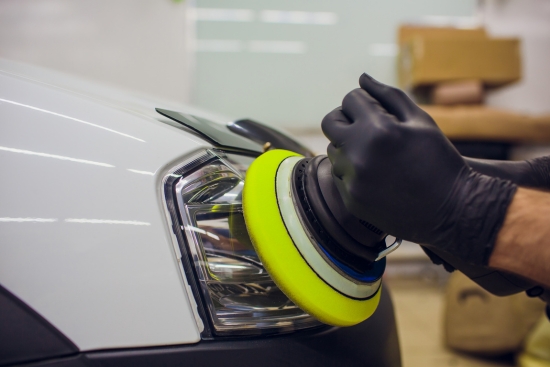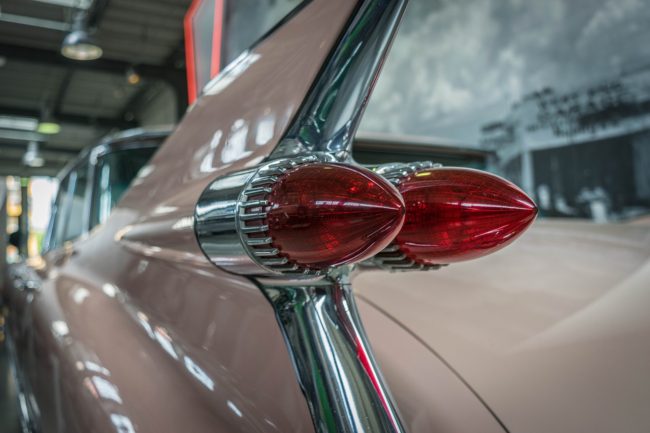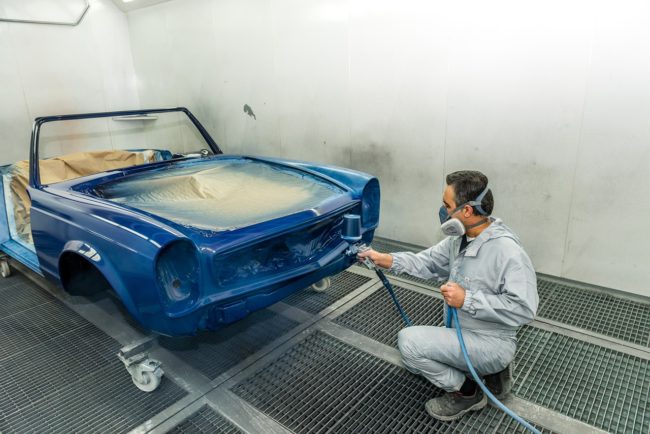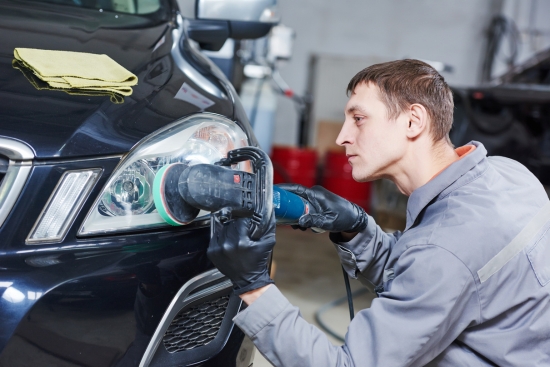Doing an auto restoration takes time, patience, money and requires some skills. It’s also helpful to have a garage, tools, and be a certified mechanic, but for some of us, we just can’t have it all. In the article below I will discuss where to find help, offer some tips and guidance, and share my experience with the auto restoration near me.
Find Auto Restoration Near Me
If you are looking for “Auto Restoration Near Me”, see the map below…
As time passes original vehicles in quality condition are increasingly harder to find. When you do find one the prices are astronomical. More and more people are turning to restoration projects as a way of getting their dream car restored and in a more affordable way. Before you can get the vehicle the way you envision it, there is a lot of work to be done. In fact, according to CarsDirect.com a full classic car restoration project takes about 100 hours to complete.
With that being said, let’s get into where to get expert help and talk about how it works…
How the Auto Restoration Near Me Operates?
These businesses are run at the local business level. Most have a variety of specialties like vintage car mechanics, finding affordable vintage auto parts, rust repair, custom paint, fabrication, welding, CNC machining, engine rebuilding, auto electrical repair, upholstery, and more.
They have many certified mechanics that are experts in their cars in various disciplines. One can go to the shops for one specific thing, like removing rust from a panel or having an engine modification done. On the flip side though you can bring them a car from a junkyard and they will do a complete tear down job.
Pricing will be based on what you need as each service costs differently.
Why Get Help On Your Auto Resto Project?…
Half the fun of an auto restoration is doing the work yourself, but if you want certain things done right, you can seek expert help. Antique vehicles need some special considerations which require a specialty auto shop to address properly. Some of the skill is finding original parts and other skills are old school mechanic skills that existed in automobiles prior to fuel injection.
Here are some of the areas that I would consider calling the auto restoration near me for services:
- Repair on the frame
- Rust removal
- Instrument & Gauge Cluster Upgrades
- Powertrain mods and upgrades
- Suspension mods and upgrades
- Paintwork
- Any frame off services
- Electrical work and diagnostics
- Performance upgrades
- Interior upgrades
I used to be completely opposed to getting help on a resto project. Over time I have realized that my time and money get wasted and I don’t see the results I want. It’s sometimes easier to hire a pro mechanic to do a one off service and give me the car back done right.
Basics of Doing an Auto Restoration Yourself
Before you dive deep into one of these projects you should have a grasp on what you can do yourself vs. where you may need help. It is also helpful if you have the original car manual to reference.
In this section, I’d like to walk you through a lightweight beginner’s guide to vehicle restoration. This may help you better plan your project and even find a suitable local auto restoration shop nearby.
Planning
Having a plan is critical. The more you plan the better you will be.
Look to answer some key questions upfront:
- How much will you spend in money?
- What kind of time commitments can you make to it?
- Where will you store it while you are working on it?
- If you need help will you someone to come to you or do you need a transport?
- Do you need to invest in more tools?
- Do you need to talk to your wife about the garage space, or costs, or time constraints?
On average restoring a classic car on your own can run between $20K and $60K, including getting the vehicle and the costs of tools and materials. It obviously varies based on the condition and type of classic vehicle that you are restoring.
In my experience, it is easier to find your budget first and then find a restoration project that fits in it. Anytime I find a resto vehicle I love and then budget around it, I always go way over budget. It still needs to be the vehicle you can get excited about though, otherwise you will never finish.
In terms of planning that process is another thing you can call an auto restoration place for. Let them take a look at what you got and they can help figure out what it costs for them to do it and tell you what it would cost for you to do it.
Finding the Perfect Auto to Restore
The hardest part of a resto project in my opinion is choosing the vehicle. You need to find a car or truck that you love, but balance that against your budget and time commitments. It is a total balancing act. It’s helpful if you reach out to other enthusiasts for advice.
Where to Find a Project Vehicle
There are a few places you can look and everyone has their own preferences. I like to check:
- Local classified ads
- Craigslist
- Local auto junkyard
- Vehicle auctions
Many people will recommend eBay and Gumtree, but personally, I will not buy a project car that I haven’t physically inspected myself first. The most important thing to consider is finding a complete vehicle with no major damage and no rust. Anything is fixable, but problems get out of hand and money goes quickly if the problems get out of control.
Garage & Tools
Unless you are contacting an auto restoration shop in your area, you are going to need equipment and space. Most people taking on a resto project already have some of what they need. If you are starting from scratch this will be by far one of the biggest expenses.
Here are some of the tools and equipment you should have on hand. You don’t need them all to get started. This goes back to why you should plan and pick a vehicle first. Maybe there are tools you can wait to spend your money on.
- Set of Screwdrivers
- Variety of Pliers
- Sockets, socket extenders and a wrench
- Tin snips
- A drill and drill bits (drill press for certain situations is helpful)
- Wire brush
- Floor jack
- Air compressor
- Voltage checker
- Jack stands
- Grinder
- Blowtorch
- Welder
- Engine crane
- Engine stand
The good news is that for some of these tools, you may be able to upgrade or rent them. If this is a one-time car project for you, an upgrade or renting could be a better option for certain pieces of equipment.
What Type Of Restoration: Restored vs Modified?
Everyone likes something different. A purist will say you should only restore a vehicle with original parts from the same time period. Where you can’t get the parts you should emulate the way the vehicle looked the day it rolled off the assembly line. Others feel like adding some personal flair and do extensive upgrades and modifications. While there is no wrong or right answer, you should know which direction your project is headed before you start.
An original vehicle will always get more cash if you sell it. However, it is your project and you should aim to please what you like and not focus on the next buyer. You likely already know in your heart whether you want your vehicle restored, or a resto-mod, but make sure you clearly communicate it.
The Actual Mechanical and Body Work Requirements
Now that we’ve got the idea past planning, budgeting, picking the project vehicle, and figuring out tools, it’s time to think about the work. As you sort through this think about what work can you do yourself vs what are you going to need help with.
Body Repair and Paint Work
Any antique car will likely need some work on the body and work on the paint. The paint fades over time even on a vehicle that was well taken care of. Then there is the issue with the body panels like rust and dings. Hopefully, you choose a vehicle with limited rust work needed. Rust is one of the hardest things in automobiles to repair. Dings in the body can be banged out, rust is a totally different beast.
Both paint and rust work can be done on your own, but there are no shortcuts. You need to learn to hammer out dents with a soft mallet and rebuild body panels from scratch. Honestly, if you have no experience with metal work, you should consider investing in a welding class. There you can learn how to make brand new panels from scratch without calling an auto restoration shop for help.
Painting is another thing that requires some skills. Painting will take even strokes, a steady hand, and a focus on polishing when it’s complete. An auto body shop can take care of this for you. An Auto restoration shop though can take the entire shell and put it on a spit and paint it.
Mechanical Work
Taking parts in and out of the engine bay isn’t all that difficult. It gets more complicated when you get into rebuilding an engine or a transmission. This work requires full disassembly, inspection of every valve, piston, gasket, etc, and then replacing any parts that are worn.
In most resto projects you might hit up a junkyard and look for a used transmission or engine, but for a rebuild, it gets more complicated. If you don’t have experience with a rebuild you can having timing issues and cause more damage to the parts than you started with.
Seized Parts Under The Hood
Every restoration vehicle I know has issues under the hood. It’s just the nature of old cars that have been sitting around and not running. When a vehicle sits dormant and doesn’t have fluids and lube pumped through it’s components the parts will corrode and deteriorate. The longer the vehicle has been sitting the more parts that are likely to fail and will need to be repaired or replaced.
Electric and Wiring Work
Unless you are working on a restoration project that the vehicle is drivable you are going to need a battery replacement or replace it. Charging the battery likely won’t bring it back to working condition and you will need to replace it. For an antique vehicle, you will need to find out the original voltage requirements to make sure you don’t overcook the electronics.
Another electrical concern that needs attention is the wiring. When wires get exposed to moisture they degrade quickly. This is a common issue if you pick up a vehicle from the junkyard. You need to make sure every wire in every wiring harness still works. The other issue with wires is mice. Mice tend to chew through wires, so even after you are done replacing them, make sure they are covered to prevent rework.
Interior Work
Interior work like ripped seats, no seats, peeled back dashboards, missing gauges, and bad carpet all need to be dealt with. What you need to look for is wet flooring and moisture. These can be signs indicative of a leak and mold. Surface mold isn’t bad to deal with. The thing is though, it’s a certain sign that your cabin is not watertight and you will need to address the issue.
Detailing Work
Once a full restoration process is complete detailing the vehicle yourself is very satisfying. If however you intend on selling it or taking it to auction, you may want to consider a professional auto detailing service. These services will work magic on the vehicle inside and out. It is particularly helpful if for example, you haven’t got a fresh coat of paint or new upholstery. This service can restore some of the original glow.
How to Choose a Local Auto Restoration Shop?
In my experience picking a shop that does it all isn’t always the best strategy. A shop that does it all is great if you are not doing any work and having them do a complete restoration from trunk to hood. What I think is best is to find restoration places that specialize. For example if you only need paint work find a shop who is the highest rated specifically for paint work. You will get better pricing and better expertise with this approach.
When picking a shop for any work you should:
- Call around to get several price quotes
- Ask for pictures of their past work
- Read reviews of past customers
- Ask them what type of vehicles they typically work on
- Ask how long the work will take
- Find out if they offer any guarantees
You also want to consider what type of vehicle you are restoring. There are specialized shops for classic cars, motorcycles, boats, trucks, RV’s, hot rods, and other vehicle types.
Transporting The Vehicle to a Restoration Shop
If you are hiring a local restoration company and the vehicle runs, then getting to and from the shop isn’t an issue. However, if you are hiring a company in another state or perhaps the vehicle doesn’t run, then you can consider an auto transport service.
I recommend paying for an enclosed trailer for any vintage or luxury vehicle. You will want to ensure that the shipping company also has insurance. If the vehicle does not run, you need to tell them upfront because that requires a specially trained driver and the right tools to load and unload the auto.
Common Challenges in Auto Restoration
Auto restoration can be a rewarding journey, bringing a classic car back to its former glory. However, it’s not without its challenges. Understanding these obstacles and knowing how to overcome them is crucial for anyone embarking on an auto restoration project.
Identifying and Overcoming Restoration Challenges
Restoring classic cars involves more than just applying a new coat of paint or fixing a few dents. One of the primary challenges is the automotive restoration process itself. It requires a highly skilled team capable of handling a broad range of tasks. From mechanical upgrades to collision damage repairs, each restoration job is unique.
The first step is to thoroughly assess the vehicle. This involves checking all systems, from the engine to the electrical setup, to identify any issues. A complete inspection will reveal the extent of work needed, helping to estimate the cost and time required. It’s important to have experienced staff who can accurately diagnose and fix problems.
Dealing with Rare or Hard-to-Find Parts
One of the most significant challenges in restoring a vintage car or a muscle car is sourcing rare or obsolete parts. Many classic cars require specific components that are no longer in production. Finding these parts can be a daunting task, often involving extensive research and contact with specialized suppliers.
In some cases, replacement parts may need to be custom made. This requires a restoration business with the necessary facilities and expertise to fabricate or modify parts. While this can be more expensive, it ensures that your restored car remains as authentic as possible.
For those looking to restore a classic vehicle, it’s essential to partner with a restoration service that has access to a wide network of suppliers and the ability to perform custom work. This not only helps in finding the right parts but also ensures that the restoration process is completed to a high quality standard.
In conclusion, while auto restoration presents various challenges, they are not insurmountable. With the right team, resources, and approach, bringing a car back to life can be an incredibly fulfilling experience, filled with a sense of pride and accomplishment. Whether it’s a muscle car restoration or a classic car project, the journey from beginning to end is what makes auto restoration so special.
Maintaining Your Restored Vehicle
After the hard work and dedication put into restoring a classic car or vintage vehicle, it’s crucial to maintain its condition. Proper care ensures that your restored car continues to operate smoothly and retains its former glory for years to come.
Tips for Keeping Your Restored Vehicle in Top Condition
- Regular Cleaning: Keep your car clean, both inside and out. Regular washing and waxing protect the paint and body from environmental damage. For the interior, use products suitable for the materials used in your restoration.
- Mechanical Check-ups: Even after a complete restoration, regular mechanical check-ups are essential. This includes checking the engine, systems, and other equipment to ensure everything is functioning correctly.
- Fluid Maintenance: Regularly check and replace fluids like engine oil, coolant, and brake fluid. Using high-quality fluids can significantly extend the life of your vehicle.
- Storage: If you’re not using your restored vehicle daily, store it in a dry, temperature-controlled environment. This protects it from weather-related damage and preserves its condition.
- Avoid Harsh Conditions: Whenever possible, avoid driving in harsh weather conditions like snow or heavy rain, which can cause rust and other damage to your car.
Recommended Maintenance Schedule Post-Restoration
- Weekly: Quick checks of tire pressure, fluid levels, and battery.
- Monthly: More thorough inspection of the engine, brakes, and lights.
- Every 3-6 Months: Change engine oil, check alignment, and inspect suspension components.
- Annually: Complete service check-up, including a detailed inspection of all major systems and components.
By adhering to these maintenance tips and schedule, you ensure that your restored car remains in excellent condition. Regular maintenance not only keeps your car running smoothly but also helps in retaining its value and appeal. Remember, a well-maintained classic car is not just a mode of transportation; it’s a piece of history and a source of pride for its owner.
Auto Restoration Near Me – Conclusion
Doing an automobile resto is not for the faint of heart. You need the space, tools, time, and money to do it. However, with that being said, you don’t have to do everything on your own. You can seek the help of experts for certain things. You don’t need an auto resto shop to do a complete teardown and makeover. Maybe you just need upholstery work, paintwork, or just let them rebuild the engine.
These folks at these shops have worked on thousands of vehicles and know what it takes. I honestly think it’s even better to call them while you are in the planning phase. They love cars and will be happy to help you price out and figure out the possibilities. That is my experience with the auto restoration near me.




